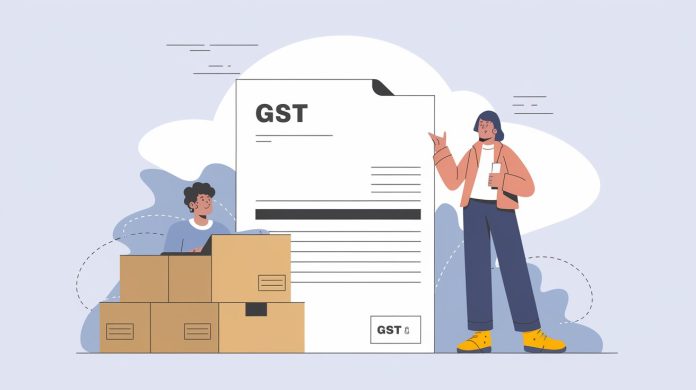In today’s fast-paced business environment, GST billing has become a cornerstone of financial compliance and operational efficiency. The Goods and Services Tax (GST) regime mandates that businesses maintain accurate documentation for all transactions, with the GST bill serving as a critical document. Whether you’re a small business owner, freelancer, or managing a large enterprise, understanding the nuances of GST bill format, simple GST bill format, and tax invoice formats is essential for staying compliant and ensuring smooth business operations.
This comprehensive guide dives deep into the world of GST billing, providing actionable insights, practical examples, and step-by-step instructions to help you master the art of creating GST-compliant invoices. Let’s explore everything you need to know about GST bill formats and how they impact your business.
What Is GST Billing?
GST billing refers to the process of generating invoices that comply with the rules and regulations set forth under the Goods and Services Tax (GST) Act. These invoices are not just transactional records; they are legal documents that serve multiple purposes:
- Proof of Purchase: A GST bill acts as proof of purchase for the buyer, enabling them to claim an Input Tax Credit (ITC).
- Tax Compliance: It ensures that both the seller and buyer adhere to GST laws, avoiding penalties and audits.
- Record Keeping: Properly formatted GST bills help businesses maintain accurate financial records, which are crucial for filing GST returns.
A GST bill includes specific details required by law, such as the supplier’s and recipient’s GST Identification Numbers (GSTIN), taxable value, applicable GST rates, and more. Understanding the intricacies of GST billing is vital for businesses of all sizes.
Why Is GST Billing Important?
Before diving into the specifics of GST bill format, let’s understand why GST billing is so important:
- Legal Compliance: Non-compliance with GST regulations can result in hefty fines and penalties. Proper GST billing ensures that your business adheres to the law.
- Input Tax Credit (ITC): Buyers can claim ITC only if they have a valid GST bill. This makes it essential for sellers to issue accurate invoices.
- Transparency: A well-structured GST bill format ensures transparency in financial transactions, fostering trust between buyers and sellers.
- Audit Preparedness: In case of audits or disputes, a properly maintained GST bill serves as evidence of the transaction.
Key Components of a GST Bill Format
To create a GST-compliant invoice, certain mandatory details must be included. Below is a breakdown of the essential components of a GST bill format :
Invoice Number and Date
Every GST bill must have a unique invoice number and the date of issue. This helps in tracking transactions and maintaining chronological records.
Supplier Details
Include the following information about the supplier:
- Name of the supplier
- Address of the supplier
- GST Identification Number (GSTIN)
Recipient Details
Provide the recipient’s details, especially if they are registered under GST:
- Name of the recipient
- Address of the recipient
- GSTIN (if applicable)
Description of Goods or Services
Clearly describe the goods or services supplied. This includes:
- Product/service name
- Quantity
- Unit price
- Total amount
HSN/SAC Codes
Harmonized System of Nomenclature (HSN) codes classify goods, while Service Accounting Codes (SAC) classify services. Including these codes ensures proper categorization of items.
Taxable Value and GST Rate
Break down the taxable amount and applicable GST rate:
- Central GST (CGST)
- State GST (SGST) or Union Territory GST (UTGST)
- Integrated GST (IGST) for inter-state transactions
Total Invoice Value
The final amount payable, including the taxable value and GST, should be mentioned.
By including all these components, your GST bill format will meet legal requirements and ensure accuracy in your accounting records.
GST Bill Format for Different Business Sectors
The GST Bill Format varies based on the type of business. Different industries have unique invoicing requirements to ensure compliance with GST regulations. Here’s how it applies to different business sectors:
1. GST Bill Format for Retail Businesses
Retail businesses issue GST invoices directly to consumers. The invoice must include details such as the shop name, GSTIN, invoice number, date, item descriptions, quantity, price, applicable GST rates (CGST, SGST, or IGST), and the total amount payable. Since retail invoices are mostly issued to unregistered buyers, including the buyer’s GSTIN is optional. Proper GST Bill Format ensures smooth tax filing and compliance.
2. GST Bill Format for Wholesale Traders
Wholesale traders deal with bulk transactions, often involving registered buyers. The GST invoice for wholesalers must include buyer and seller GSTIN, HSN codes, quantity, rate per unit, total taxable value, and tax breakdown. Additionally, wholesalers must issue a tax invoice if selling to a registered business or a bill of supply if dealing in exempt goods. A well-structured GST Bill Format helps wholesalers maintain accurate records for input tax credit claims.
3. GST Bill Format for Service Providers
Service providers, such as consultants, IT firms, and freelancers, must issue GST invoices detailing service descriptions, SAC codes, taxable value, applicable GST rates, and the total payable amount. Unlike product invoices, service invoices do not include quantity or unit price but must specify the period of service. The GST Bill Format for service providers ensures proper documentation of tax liabilities and input tax credit eligibility.
4. GST Bill Format for E-Commerce Businesses
E-commerce sellers and platforms follow a GST Bill Format that includes additional details such as order ID, mode of payment, and platform-specific charges like commission and shipping fees. If selling to unregistered buyers, GST invoices must include tax details based on the buyer’s location. Registered buyers must receive invoices with their GSTIN to claim input tax credit. Proper invoicing in e-commerce is crucial for seamless GST compliance and reconciliation with GST returns.
Each business sector must follow the correct GST Bill Format to ensure tax compliance, avoid penalties, and streamline the billing process. Using GST-compliant billing software helps automate invoice generation and reduces manual errors.
GST Invoice Format vs. Tax Invoice Format
While the terms GST invoice format and tax invoice format are often used interchangeably, there are subtle differences:
- GST Invoice Format: Focuses specifically on the requirements of the GST regime. It includes details like CGST, SGST, and IGST, depending on the nature of the transaction.
- Tax Invoice Format: A broader term that may refer to any invoice containing tax details. Under GST, a tax invoice becomes synonymous with a GST invoice when it adheres to GST rules.
For businesses, ensuring that the invoice meets the criteria of a tax invoice bill is critical. Any discrepancy can lead to compliance issues, penalties, or rejection of Input Tax Credit claims.
Simplified Approaches: Simple GST Bill Format
Not all businesses require a detailed GST bill format. Many small businesses, freelancers, and service providers prefer a simple GST bill format that is easier to generate and manage. Here’s what a simplified invoice typically includes:
Basic Supplier and Buyer Details
- Name and address of the supplier
- Name and address of the buyer (GSTIN optional for unregistered buyers)
Summary of Goods or Services
- A brief description of the products or services provided
- Quantity and rate per unit
GST Breakdown
- Total amount before tax
- Applicable GST rate
- Total GST amount
- Final amount payable
This simple GST bill format is particularly useful for businesses with straightforward transactions, such as freelancers offering consulting services or small retailers selling low-value goods.
Practical Example: GST Invoice Sample
To better understand how a GST bill format works, here’s a practical example:
Header Section:
- Invoice Title: “Tax Invoice”
- Invoice Number: INV-12345
- Date : 10th October 2023
Supplier & Recipient Information:
- Supplier :
- Name: ABC Enterprises
- Address: 123 Business Park, Mumbai, Maharashtra
- GSTIN: 27ABCDE1234F1Z5
- Recipient :
- Name: XYZ Corporation
- Address: 456 Corporate Hub, Pune, Maharashtra
- GSTIN: 27FGHIJ6789G2Z6
Transaction Details:
| Description | Quantity | Rate (₹) | Amount (₹) | HSN/SAC Code |
| Office Supplies | 10 | 500 | 5,000 | 3926 |
| Consulting Services | 1 | 10,000 | 10,000 | 9983 |
Tax Calculation:
- Taxable Value: ₹15,000
- CGST @ 9% : ₹1,350
- SGST @ 9% : ₹1,350
- Total GST: ₹2,700
Total Amount Due:
- Final Invoice Total: ₹17,700
This GST invoice sample demonstrates how to structure a detailed yet easy-to-understand invoice. You can customize it based on your business needs.
Benefits of Using GST Software
Creating and managing GST bills manually can be time-consuming and prone to errors. This is where GST software comes in handy. Here are some benefits:
- Automation: Automatically generate GST-compliant invoices with minimal effort.
- Error Reduction: Eliminate manual errors in calculations and formatting.
- Real-Time Updates: Stay updated with the latest GST rules and regulations.
- Easy Filing: Integrate with GST portals for seamless return filing.
Conclusion
Mastering GST billing is no longer optional—it’s necessary for businesses operating in India. Whether you choose a detailed GST bill format or a simple GST bill format, understanding the required components ensures compliance and accuracy. By adopting the right practices and leveraging tools like GST software, you can streamline your invoicing process, avoid penalties, and focus on growing your business.
Keep this guide handy as a reference to ensure your invoices always align with the latest GST regulations. Stay informed, stay compliant, and watch your business thrive in the GST era.




















